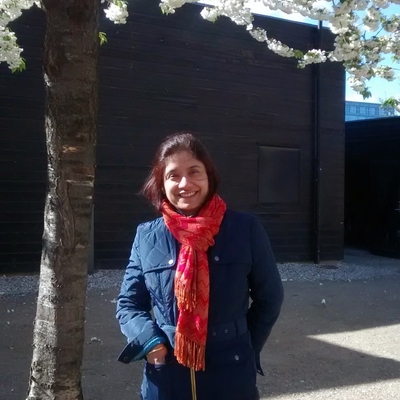At the Bengali Hindu Festival of the Mother Goddess (Durga Puja) celebrations in Amstelveen last autumn, X was one of the two men officiating as priests. They were performing various rituals and making myriad offerings to the goddess and her four children (see photograph 1). X was dressed in “traditional attire” appropriate to this occasion. On the 8th day of the festival (Mahashtami), he performed rituals that necessitated the use of doi (curd) and tulasi (holy basil) leaves. Out of a small locked fridge [see photograph 5] to the right of the podium appeared a fresh carton of Campina magere yoghurt which was used as curd [see photograph 2]. Nestled amongst the various other fruit and cooked food offerings [see photograph 4], stood a potted plant of biologisch basilicum that was used as tulasi or holy basil leaves [see photograph 3]. The rituals have to continue, he explained, with “Dutch ingredients” that “approximate” the “original pure and scared ingredients in India”.
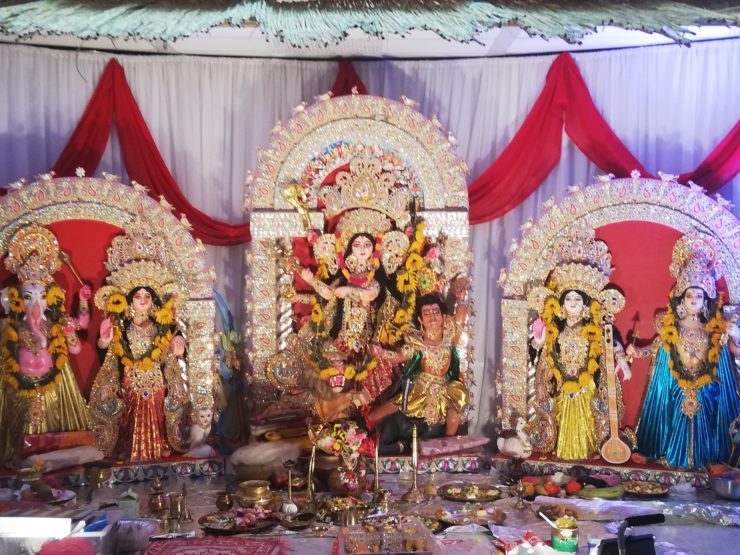
Photograph 1: The Mother Goddess and her four children
X was born in India, raised by Bengali Hindu Brahmin parents, and had moved to the Netherlands about ten years ago as an expat. Before moving to the Netherlands, he had come across familiar stereotypes regarding the Dutch weather, dykes, windmills, Gouda cheese, and Dutch “frankness”. Now he sees himself as “more Dutch than Indian”, and presents himself as “cosmopolitan”. He seems to cook or buy “pure vegetarian Indian food” when he has guests at home. He does not have an altar at home inhabited by various Hindu gods and goddesses. He speaks fluent Dutch, and has a Dutch girlfriend. He celebrates some Hindu festivals like Durga Puja with his aunt who lives in the Netherlands. He understands the “connecting value of food” and uses this. He likes to invite people over and cook for them because food brings people together: he sees it as a moment of reciprocal trust. He cooks “Indian food” for his expat friends from various parts of the world who live in Den Haag, Leiden and Amsterdam, and also like “eating together”. X sees the Netherlands as “rather peaceful” where “various cultural groups have opportunities to integrate into “Dutch culture” which is “open to, and accommodates an interesting variety of world foods, cuisines, and spices”. But he also notes that some do not seem to understand this, and take this as an opportunity to stick to “their own”. He views “open cultures as fragile in their openness”; he would therefore like to “promote and protect this openness” by becoming a Dutch politician one day.
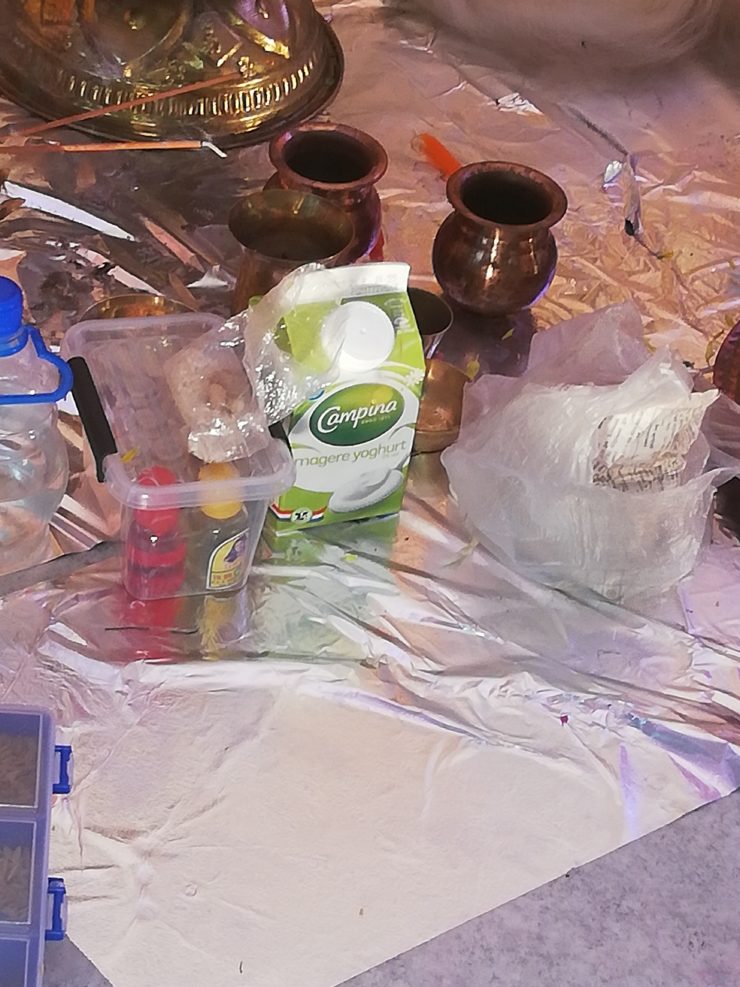
Photograph 2: Campina magere yoghurt used as doi
The above forays into food matters, bring several questions and puzzles to the fore. Is X the ideal immigrant who has “integrated completely” into “Dutch society”? After all, he still holds on to aspects of his “Indian heritage” such as cooking “pure vegetarian Indian food” for his guests, celebrating the festival of the Mother Goddess, and performing those rituals of worship at the festival. At what point in time, is an immigrant perceived to have “successfully integrated” into a “host or receiving society”? (cf. Rytter 2019). On the other hand, it could also be argued that he is a “cosmopolitan denizen of the world” who makes use of certain aspects of his “culinary heritage” from his “homeland of origin” to navigate his plural surroundings and connect with various groups of people, and pragmatically adapts “food as religious heritage” and “traditional rituals” to include ingredients/elements that are available in the present surroundings of his host society. How might one perceive “cosmopolitanism” or “integration” in this context? Does it entail giving up all aspects of an immigrant’s heritage of origin? If “successful integration” does indeed entail this, then how might one define “co-existence”, “plurality”, “diversity” or “cosmopolitanism” in “plural urban settings”? What happens when such “entangled” negotiations are perceived as “not successful” or “fail”? What are the “social imaginaries” (Taylor 2004) underpinning “Dutch society” and values of “Dutchness” that an immigrant is perceived as integrating into or co-existing in?
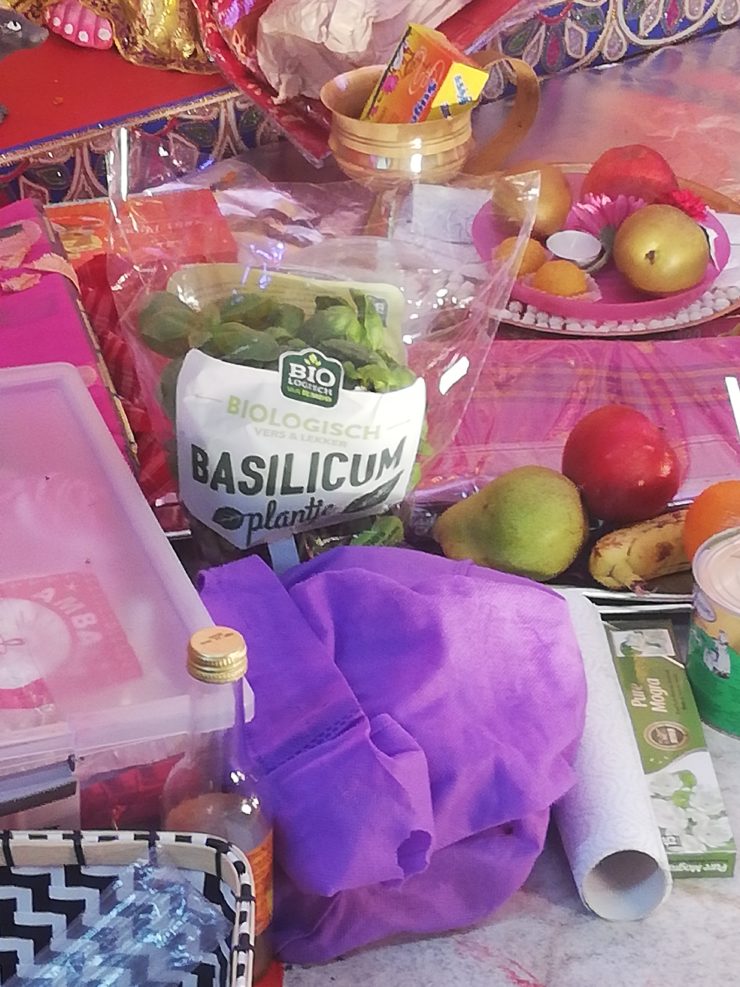
Photograph 3: Biologisch basilicum used as tulasi
These are some of the questions that my new project engages with, under the aegis of the multi-disciplinary research programme Religious Matters in an Entangled World. Using food as a form of relating to others, all kinds of others – humans (“hosts” and “guests”/“immigrants”) and non-humans (gods, plants, animals) (Janeja 2010: 52) – my project focuses on the mediations, negotiations, and transformations effected by food as a material matter in such settings, thereby offering a fruitful entry point into the dynamics of entangled co-existence. Using cultural anthropological tools of ethnography, participant observation, and comparison, it investigates the work of food as a material matter, travelling across domains – “religious/non-religious” – in the production of “sameness”, “similarity”, and “difference” in entangled co-existence. This new project resonates with some of my earlier anthropological investigations of the “contextual agency of food” in issues of trust, hospitality, religion, and multiculturalism in the “gastro-politics” (Appadurai 1981: 495) of “normal” food in urban homes, marketplaces, and restaurants in India (Calcutta) and Bangladesh (Dhaka), and “halal/healthy” school meals in England (London and Birmingham) (e.g. Janeja 2010; 2016; forthcoming). I am excited about working together with such an interesting interdisciplinary team of colleagues spanning Religious Studies, History, Philosophy, and Anthropology.
Manpreet K. Janeja is Senior Research Fellow on the Religious Matters Project.
All photographs by Manpreet K. Janeja. Amstelveen, Autumn 2019.
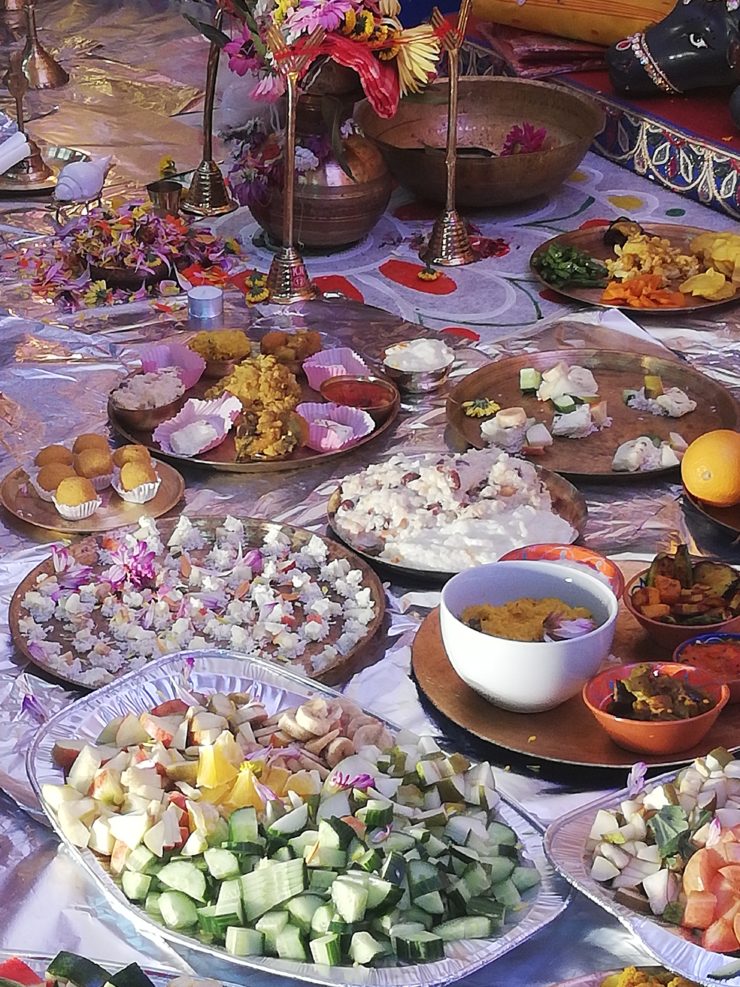
Photograph 4: Food offerings to the Mother Goddess and her children
References
– Appadurai, Arjun (1981). Gastro-Politics in Hindu South Asia. American Ethnologist, 8(3): 494-511.
– Janeja, Manpreet K. (2010). Transactions in Taste: The Collaborative Lives of Everyday Bengali Food. London, New Delhi: Routledge.
– Janeja, Manpreet K. (2016). “Rethinking Street Foods: Street Food Hospitality in Contemporary Calcutta”. In Food Hawkers: Selling in the Street from Antiquity to the Present, edited by Melissa Calaresu and Danielle van den Heuvel. London: Taylor and Francis,186-207.
– Janeja, Manpreet K. (forthcoming). The Aesthetics of School Meals: (Dis)Trust, Risk, and Uncertainty.
– Rytter, Mikkel (2019). Writing Against Integration: Danish Imaginaries of Culture, Race and Belonging. Ethnos, Journal of Anthropology, 84(4): 678–697.
– Taylor, Charles (2004). Modern Social Imaginaries. Durham, NC: Duke University Press.

Photograph 5: The locked fridge


